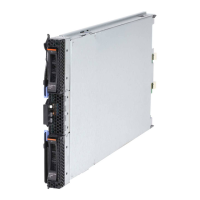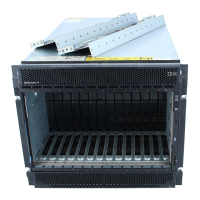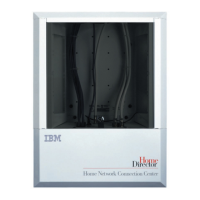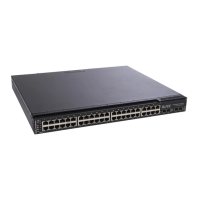To set a port as either a tagged or an untagged port, highlight the first field of
Tagging (U/T) field. The state of each port can be set by highlighting the port entry
using the arrow keys and then toggling between U or T using the Spacebar.
U Specifies the port as an Untagged member of the VLAN. When an
untagged packet is transmitted by the port, the packet header remains
unchanged. When a tagged packet exits the port, the tag is stripped and
the packet is changed to an untagged packet.
T Specifies the port as a Tagged member of the VLAN. When an untagged
packet is transmitted by the port, the packet header is changed to include
the 32-bit tag associated with the Port VLAN Identifier (PVID); see
“Configure 802.1Q Port Settings”). When a tagged packet exits the port, the
packet header is unchanged.
If the port is attached to a device that is not IEEE 802.1Q VLAN compliant
(VLAN-tag unaware), then the port should be set to U - Untagged.
If the port is attached to a device that is IEEE 802.1Q VLAN compliant, (VLAN-tag
aware), then the port should be set to T - Tagged.
Press APPLY to make the changes effective for the current session. To enter the
changes into NVRAM, highlight Save Changes in the main menu and press Enter.
Configure 802.1Q Port Settings
To configure an 802.1Q VLAN, highlight Configure 802.1Q Port Settings on the
VLAN Menu and press Enter:
To assign a port a Port VLAN Identifier (PVID), select the desired module and
port(s) in the first two fields, and enter the PVID for the VLAN member ports that
you want to configure in the third field.
PVID is a classification mechanism that associates a port with a specific VLAN and
is used to make forwarding decisions for untagged packets received by the port.
For example, if port #2 is assigned a PVID of 3, then all untagged packets received
on port #2 will be assigned to VLAN 3. This number is generally the same as the
VID# number assigned to the port in the Edit 802.1Q VLANs window shown in
“Edit 802.1Q VLANs” on page 107.
To set the priority of a port, select the desired module and port(s) in the first two
fields and then enter the desired priority value in the Priority field.
Chapter 6. Configuring the switch module through the Telnet interface 109
